Implementation of a Load Sensitizing Bridge Spherical Bearing Based on Low-Coherent Fiber-Optic Sensors Combined with Neural Network Algorithms
Abstract
1. Introduction
2. Theoretical Background
2.1. Strain Sensors Based on Scanning Fiber-Optic Low-Coherent Michelson Interferometer (SLMI)
2.2. The Back-Propagation Neural Network
3. Experimental Study
3.1. Finite Element Analysis
3.2. Loading Experiments
4. Discussion
5. Conclusions
Author Contributions
Funding
Institutional Review Board Statement
Informed Consent Statement
Data Availability Statement
Conflicts of Interest
References
- Han, Q.; Ma, Q.; Xu, J.; Liu, M. Structural health monitoring research under varying temperature condition: A review. J. Civ. Struct. Health Monit. 2020, 1–25. [Google Scholar] [CrossRef]
- Choo, J.F.; Goo, N.S. Design of a d 33-mode piezocomposite electricity generating element and its application to bridge monitoring. J. Cent. South Univ. 2014, 21, 2572–2578. [Google Scholar] [CrossRef]
- Choo, J.F.; Ha, D.-H.; Chang, S.-G.; Lee, D.-H.; Cho, C.-B. New Bridge Weigh-in-Motion System Using Piezo-Bearing. Shock Vib. 2018, 2018, 6185695. [Google Scholar] [CrossRef]
- Caussignac, J.-M. Bearings of a bridge fitted with load measuring devices based on an optical fiber technology. In Proceedings of the First European Conference on Smart Structures and Materials, Glasgow, UK, 1 May 1992; p. 177716. [Google Scholar]
- Caussignac, J.-M.; Barbachi, M.; Chabert, A. Bridge bearings equipped with optical fiber sensor for measuring vertical load through the support. In Proceedings of the Smart Structures and Materials 1996: Smart Systems for Bridges, Structures, and Highways, San Diego, CA, USA, 22 April 1996; pp. 220–228. [Google Scholar]
- Zhuang, Y.Z.; Fu, G.K.; Chun, P.J.; Feng, J.H. Sensored Elastomeric Bridge Bearing and its Application. Adv. Mater. Res. 2011, 163–167, 2887–2890. [Google Scholar] [CrossRef]
- Gai, W.; Jiang, R.; Yu, F.; Chen, Y.; Peng, J.; Dong, J. Spherical Steel Bearing, Intelligent Bearing and Bearing Monitoring System. U.S. Patent Application No. 15/865, 191, 24 May 2018. [Google Scholar]
- Chang, S.-J.; Kim, N.-S. Development of smart seismic bridge bearing using fiber optic Bragg-grating sensors. In Proceedings of the Sensors and Smart Structures Technologies for Civil, Mechanical, and Aerospace Systems 2013, San Diego, CA, USA, 22 April 2013; p. 869228. [Google Scholar]
- Steelman, J.S.; Fahnestock, L.A.; Filipov, E.T.; LaFave, J.M.; Hajjar, J.F.; Foutch, D.A. Shear and friction response of nonseismic laminated elastomeric bridge bearings subject to seismic demands. J. Bridge Eng. 2013, 18, 612–623. [Google Scholar] [CrossRef]
- Filipov, E.T.; Fahnestock, L.A.; Steelman, J.S.; Hajjar, J.F.; LaFave, J.M.; Foutch, D.A. Evaluation of quasi-isolated seismic bridge behavior using nonlinear bearing models. Eng. Struct. 2013, 49, 168–181. [Google Scholar] [CrossRef]
- Peng, T.; Yu, X.; Wang, L.; Zhang, P. Development and test of a multi-defense aseismic spherical bearing. J. Tongji Univ. Nat. Sci. 2012, 40, 992–995. [Google Scholar]
- Wei, H.; Zhao, X.; Kong, X.; Zhang, P.; Cui, Y.; Sun, C. The performance analysis of distributed Brillouin corrosion sensors for steel reinforced concrete structures. Sensors 2014, 14, 431–442. [Google Scholar] [CrossRef]
- Sun, C.; Yu, L.; Sun, Y.; Yu, Q. Scanning white-light interferometer for measurement of the thickness of a transparent oil film on water. Appl. Opt. 2005, 44, 5202–5205. [Google Scholar] [CrossRef]
- Zhang, P.; Wei, H.; Zhao, X.; Sun, C. Fiber-optic ground settlement sensor based on low-coherent interferometry. Appl. Opt. 2014, 53, 3278–3282. [Google Scholar] [CrossRef]
- Chen, Z.; Zheng, D.; Shen, J.; Qiu, J.; Liu, Y. Research on distributed optical-fiber monitoring of biaxial-bending structural deformations. Measurement 2019, 140, 462–471. [Google Scholar] [CrossRef]
- Abdeljaber, O.; Avci, O.; Kiranyaz, S.; Gabbouj, M.; Inman, D.J. Real-time vibration-based structural damage detection using one-dimensional convolutional neural networks. J. Sound Vib. 2017, 388, 154–170. [Google Scholar] [CrossRef]
- Neves, A.; Gonzalez, I.; Leander, J.; Karoumi, R. Structural health monitoring of bridges: A model-free ANN-based approach to damage detection. J. Civ. Struct. Health Monit. 2017, 7, 689–702. [Google Scholar] [CrossRef]
- Haykin, S.; Network, N. A comprehensive foundation. Neural Netw. 2004, 2, 41. [Google Scholar]
- Wei, H.; Liao, K.; Zhao, X.; Kong, X.; Zhang, P.; Sun, C. Low-coherent fiber-optic interferometry for in situ monitoring the corrosion-induced expansion of pre-stressed concrete cylinder pipes. Struct. Health Monit. 2019, 18, 1862–1873. [Google Scholar] [CrossRef]
- Guo, J.; Tan, Y.; Peng, L.; Chen, J.; Wei, C.; Zhang, P.; Zhang, T.; Alrabeei, S.; Zhang, Z.; Sun, C. Performance of the fiber-optic low-coherent ground settlement sensor: From lab to field. Rev. Sci. Instrum. 2018, 89, 045008. [Google Scholar] [CrossRef]
- Fu, R.; Xu, H.; Wang, Z.; Shen, L.; Cao, M.; Liu, T.; Novák, D. Enhanced Intelligent Identification of Concrete Cracks Using Multi-Layered Image Preprocessing-Aided Convolutional Neural Networks. Sensors 2020, 20, 2021. [Google Scholar] [CrossRef]
- Puruncajas, B.; Vidal, Y.; Tutivén, C. Vibration-Response-Only Structural Health Monitoring for Offshore Wind Turbine Jacket Foundations via Convolutional Neural Networks. Sensors 2020, 20, 3429. [Google Scholar] [CrossRef]
- Dung, C.V. Autonomous concrete crack detection using deep fully convolutional neural network. Autom. Constr. 2019, 99, 52–58. [Google Scholar] [CrossRef]
- Yu, Y.; Li, Y.; Li, J. Nonparametric modeling of magnetorheological elastomer base isolator based on artificial neural network optimized by ant colony algorithm. J. Intell. Mater. Syst. Struct. 2015, 26, 1789–1798. [Google Scholar] [CrossRef]
- Hinton, G.E. Learning distributed representations of concepts. In Proceedings of the Eighth Annual Conference of the Cognitive Science Society, Amherst, MA, USA, 15–17 August 1986; p. 12. [Google Scholar]
- Lu, J.; Qiu, M.; Li, Y. Numerical analysis of self-lubricating radial spherical plain bearings and investigations on fatigue damage mechanisms of the liner. Tribol. Int. 2016, 96, 97–108. [Google Scholar] [CrossRef]

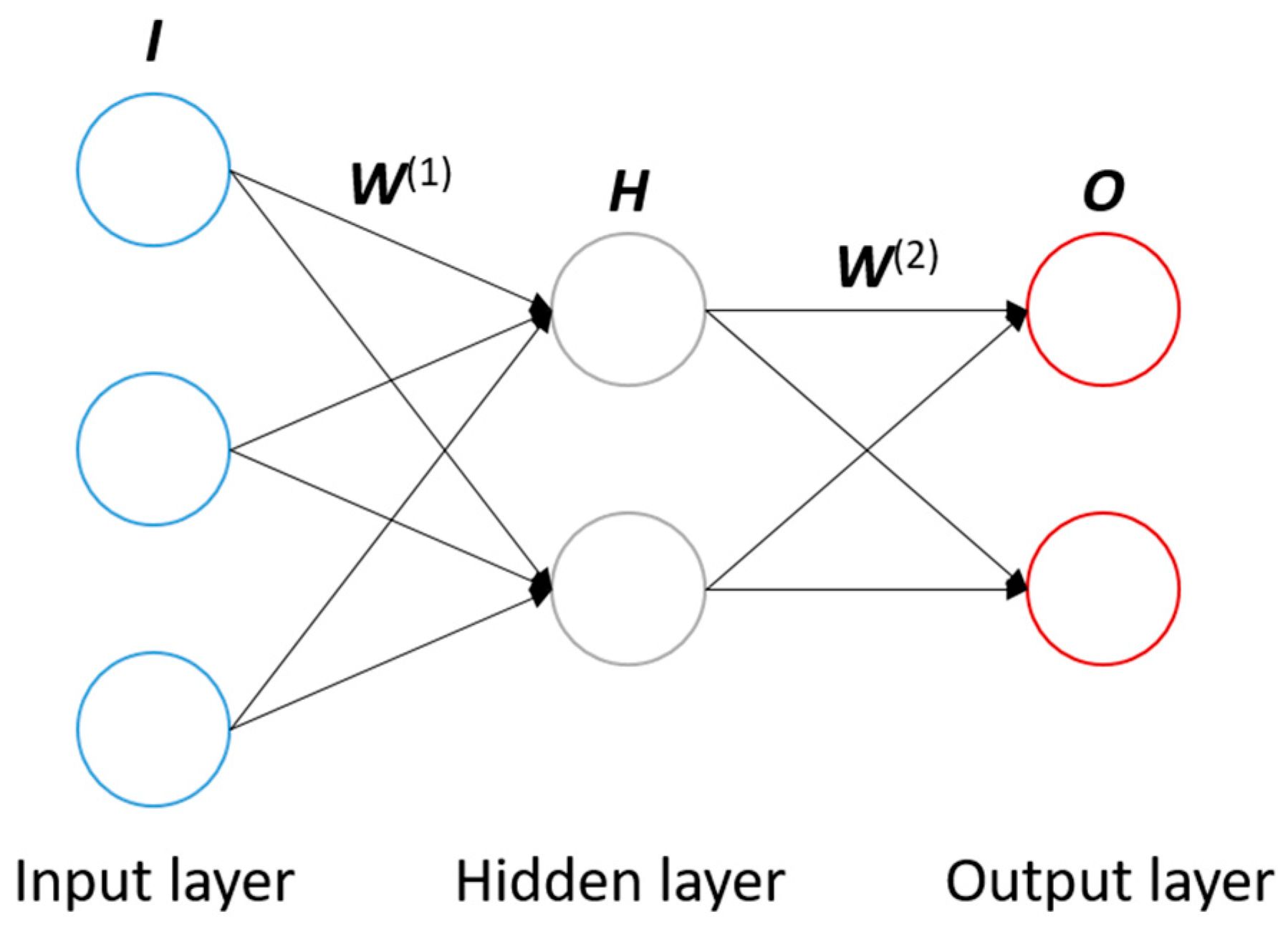
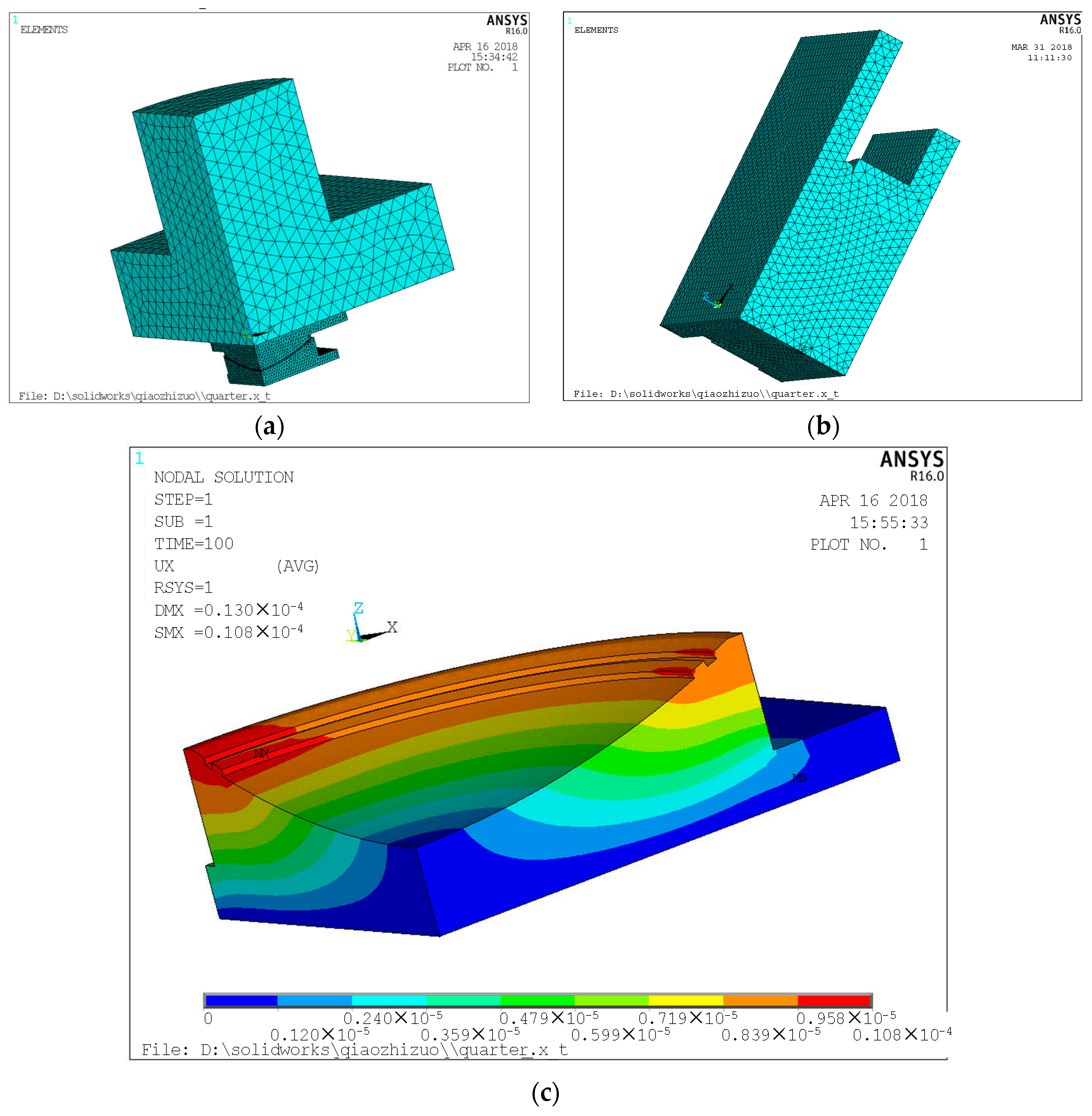

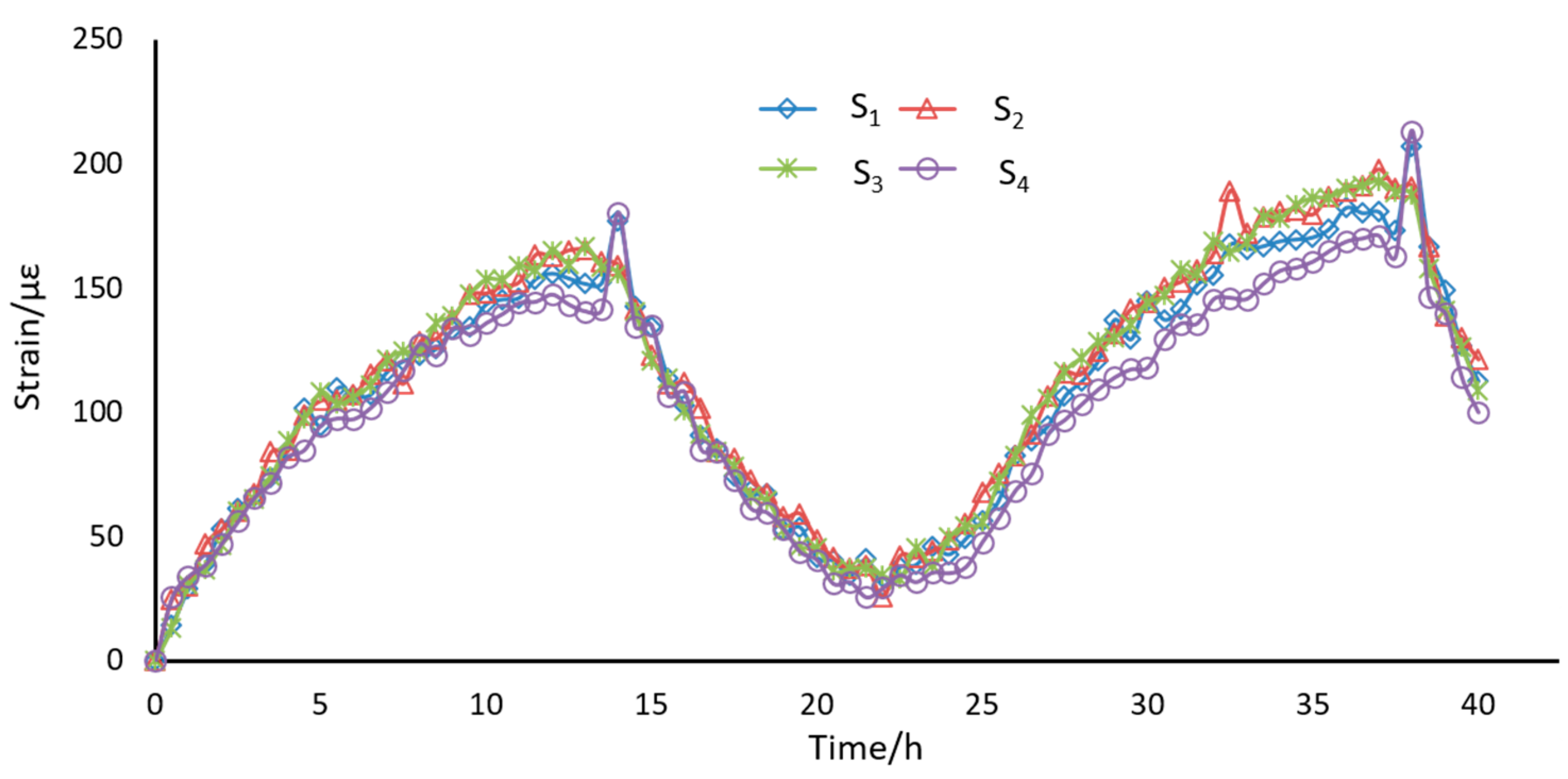
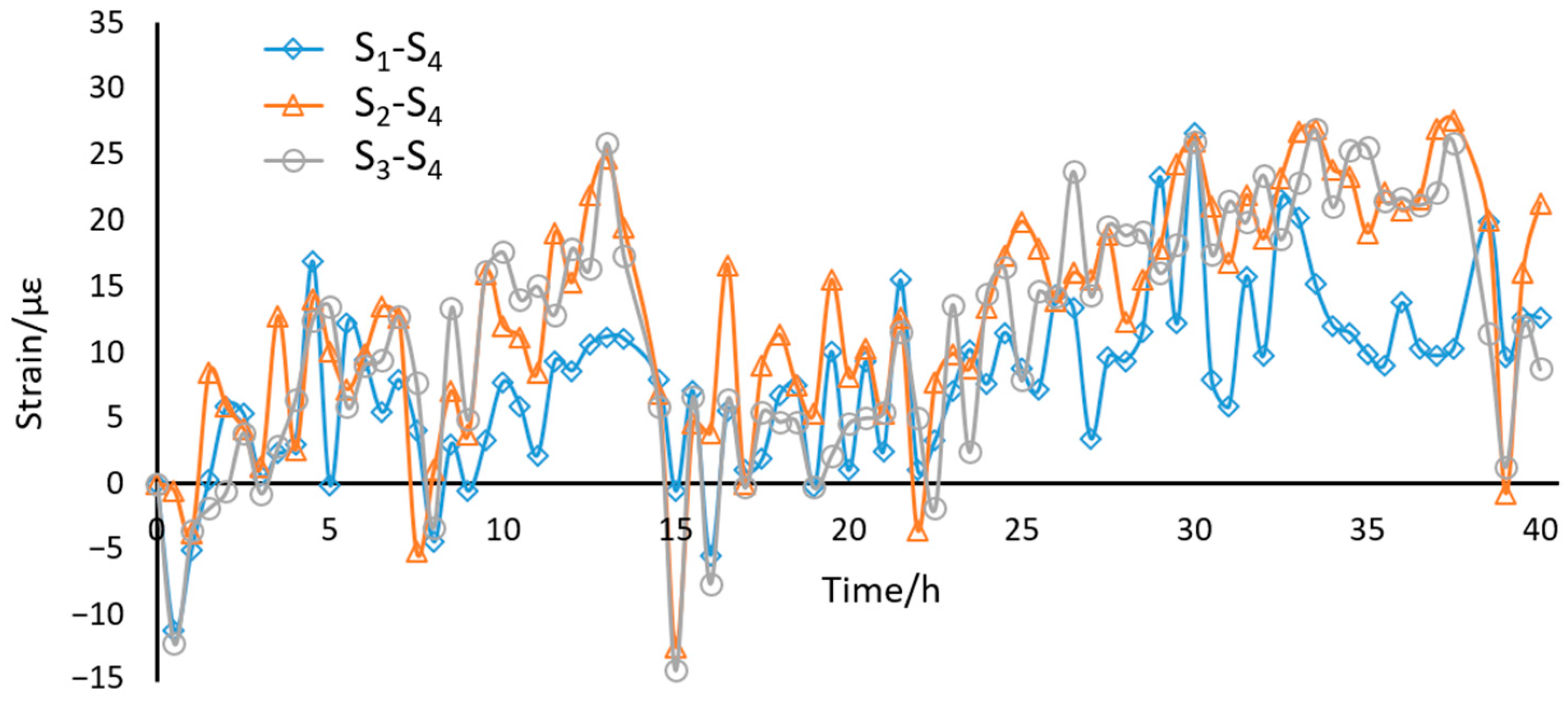
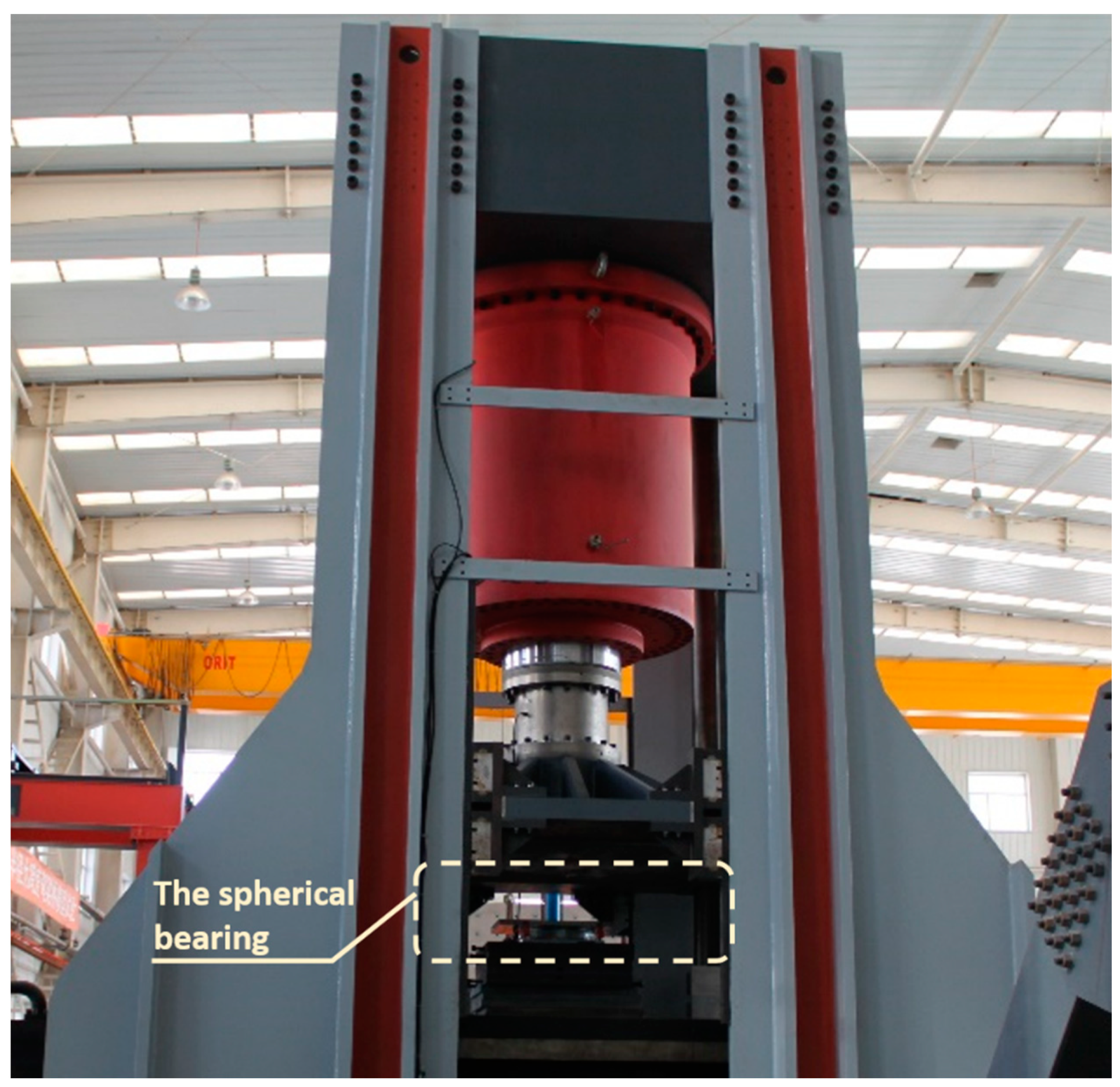
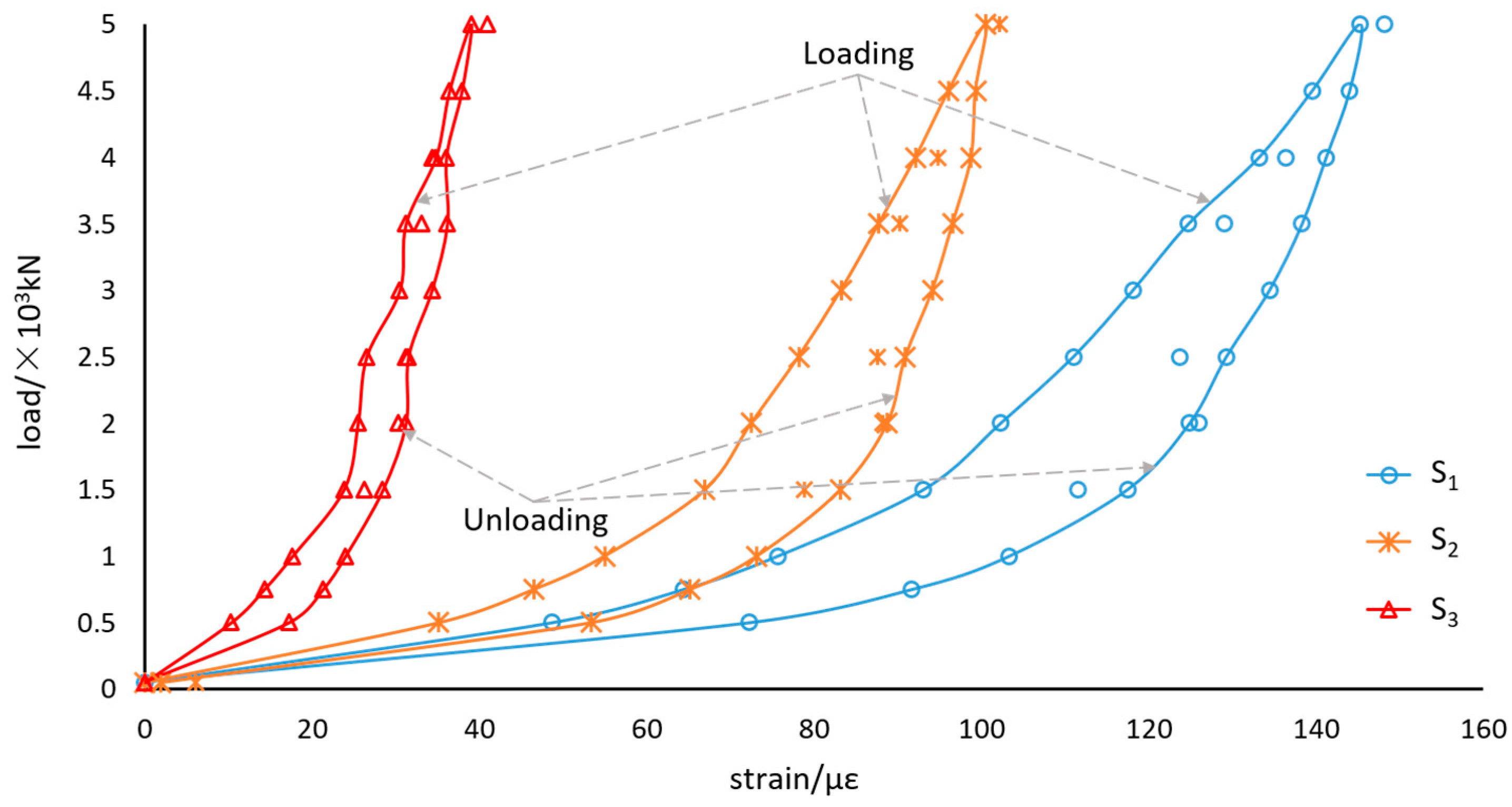

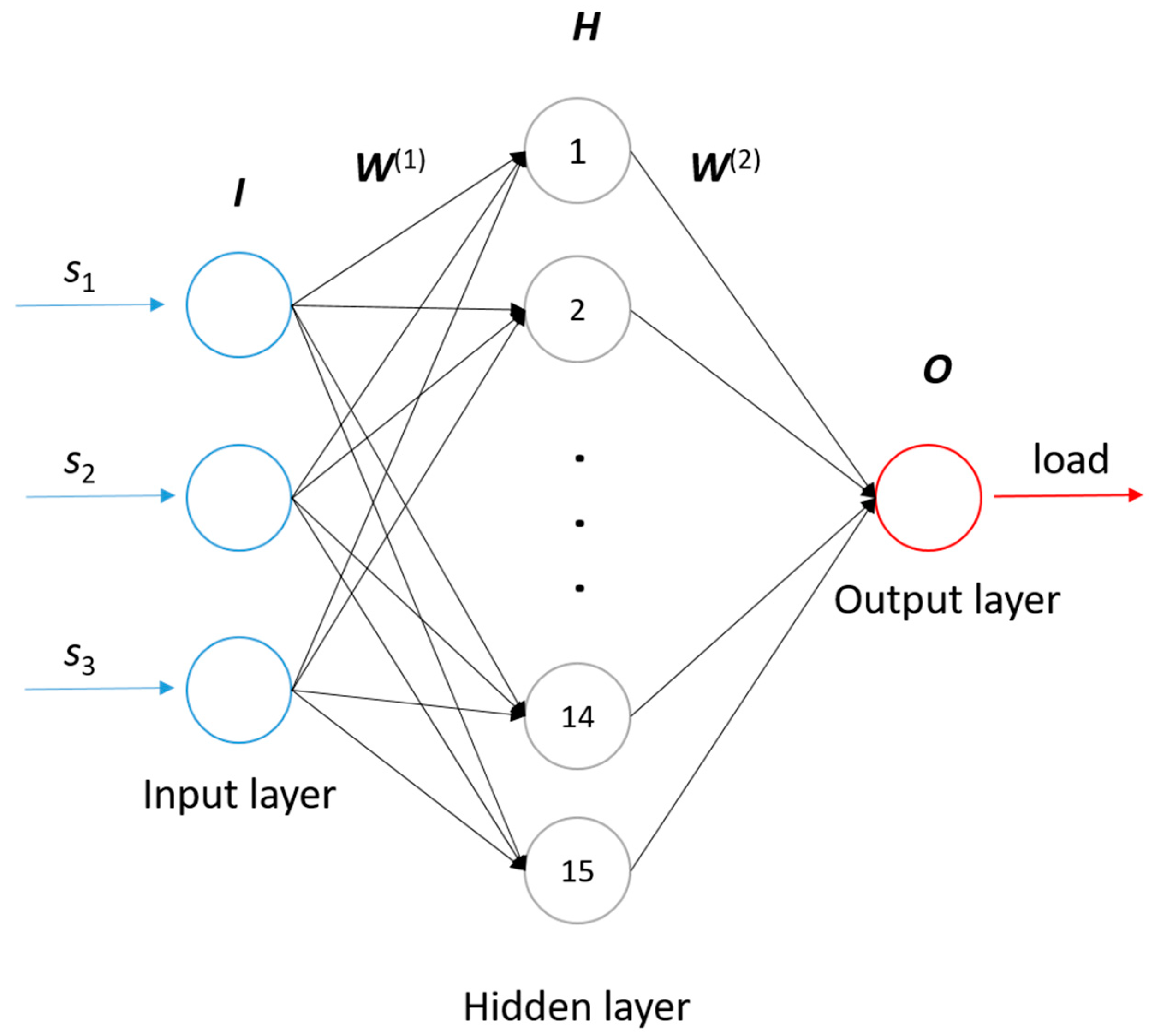
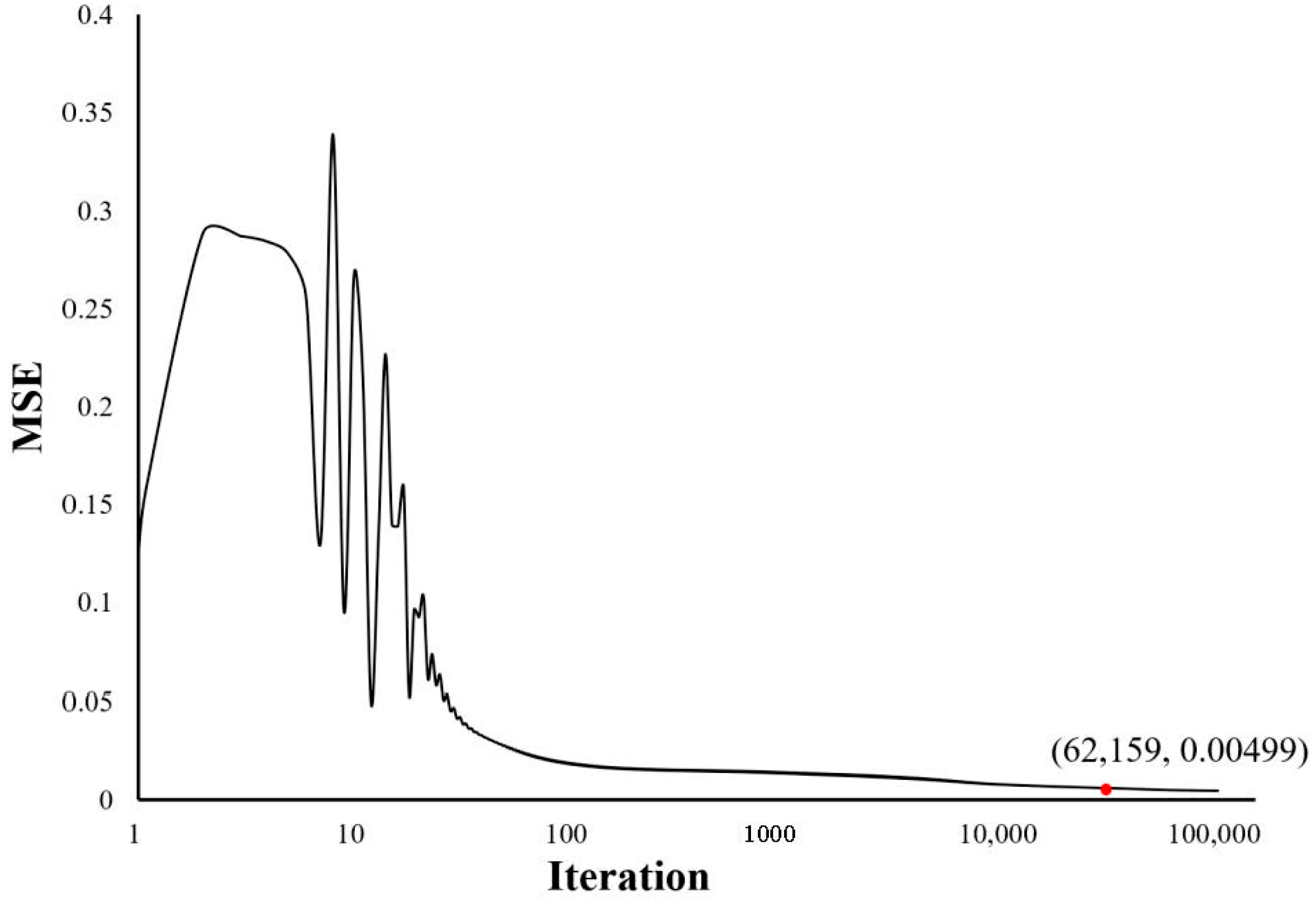
| Elastic Modulus | 2 × 1011 Pa | |
| Poisson’s Ratio | 0.3 | |
| Friction coefficient | Upper slate—Lower slate | 0.15 |
| Lower slate—Bridge pier | 0.4 | |
| Actual Load/kN | Predicted Load/kN | Deviations |
|---|---|---|
| 3500 | 3625 | 2.5% |
| 1500 | 1668 | 3.36% |
| 4000 | 3783 | 4.34% |
| 2500 | 2760 | 5.20% |
| 5000 | 4803 | 3.94% |
| 50 | 5 | 0.09% |
Publisher’s Note: MDPI stays neutral with regard to jurisdictional claims in published maps and institutional affiliations. |
© 2020 by the authors. Licensee MDPI, Basel, Switzerland. This article is an open access article distributed under the terms and conditions of the Creative Commons Attribution (CC BY) license (http://creativecommons.org/licenses/by/4.0/).
Share and Cite
Guo, J.; Geng, T.; Yan, H.; Du, L.; Zhang, Z.; Sun, C. Implementation of a Load Sensitizing Bridge Spherical Bearing Based on Low-Coherent Fiber-Optic Sensors Combined with Neural Network Algorithms. Sensors 2021, 21, 37. https://doi.org/10.3390/s21010037
Guo J, Geng T, Yan H, Du L, Zhang Z, Sun C. Implementation of a Load Sensitizing Bridge Spherical Bearing Based on Low-Coherent Fiber-Optic Sensors Combined with Neural Network Algorithms. Sensors. 2021; 21(1):37. https://doi.org/10.3390/s21010037
Chicago/Turabian StyleGuo, Jingjing, Tiesuo Geng, Huaizhi Yan, Lize Du, Zhe Zhang, and Changsen Sun. 2021. "Implementation of a Load Sensitizing Bridge Spherical Bearing Based on Low-Coherent Fiber-Optic Sensors Combined with Neural Network Algorithms" Sensors 21, no. 1: 37. https://doi.org/10.3390/s21010037
APA StyleGuo, J., Geng, T., Yan, H., Du, L., Zhang, Z., & Sun, C. (2021). Implementation of a Load Sensitizing Bridge Spherical Bearing Based on Low-Coherent Fiber-Optic Sensors Combined with Neural Network Algorithms. Sensors, 21(1), 37. https://doi.org/10.3390/s21010037




